– Welcome everyone to Wednesday Nite @ the Lab. I’m Tom Zinnen. I work here at the UW-Madison Biotechnology Center. I also work for the Division of Extension. And on behalf of those folks and our other co-organizers, Wisconsin Public Television, Wisconsin Alumni Association, and the UW-Madison Science Alliance, thanks again for coming to Wednesday Nite @ the Lab. We do this every Wednesday night, 50 times a year. Tonight, it’s my great pleasure to introduce to you Monica Turner. She’s a professor in the Department of Integrative Biology. She’s gonna be talking with us about the uncertain future of Yellowstone in a warmer world with more fire. She was born in Astoria in Queens in New York City, and she went to high school at Maria Regina High School in Uniondale, New York, on Long Island.
I don’t know how that G slips in there like that, but it’s amazing. She also went to college at Fordham University, which I believe is on Long Island.
– Monica: Nope, nope.
– Where is it? Where is it?
– Monica: It’s in the Bronx.
– It’s in the Bronx; I stand corrected. [Monica laughing] She studied biology, and then she went to the University of Georgia to get her PhD in ecology. Then she spent seven years as a research scientist at Oak Ridge National Laboratory. And in 1994, lo these 25 years ago, she came to UW-Madison. When she came here, it was called the Department of Zoology. In the last couple years, they changed the name; now it’s the Department of Integrative Biology.
This is a pretty cool thing. Many of us can remember 1988. There wasn’t a whole lotta rain in the summer of 1988, and that was tough for us here in the Midwest. But the other big story was, night after night after night on the nightly news, watching Yellowstone burn, and it was a pretty tough thing to watch. And Monica, I think, has been studying it ever since. Is that correct?
– Monica: Mm-hmm.
– So would you please join me in welcoming Monica Turner to Wednesday Nite @ the Lab. [audience applauding]
– Well, thanks Tom, and thanks, everybody, for coming out on a lovely evening. It was, at least for me to walk down the hill and stuff, a lovely night tonight, so I’m glad to be doing it now and not in the middle of January when we get another polar vortex. But I’m happy to be able to share with you tonight some of the work that we’ve been doing in Yellowstone, and take you on a little bit of an adventure.
So at the outset, I also wanna just acknowledge that many of my graduate students and postdocs and collaborators have participated in this work over the years, and we’ve had funding from federal and local sources, and lots of acknowledgements to make. It’s not just my work. But I think we probably all agree that our national parks are national treasures. And in fact, they’re international treasures. If you go to Yellowstone or any of the parks these days, you’ll see visitors from all over the world. But these are very special places that preserve elements of our natural and our cultural heritage. And I’m gonna take you tonight to Greater Yellowstone. So we’re up in — I have to use the mouse instead of my pointer. So we’re up in northwest corner of Wyoming in the Northern Rocky Mountain region. This view of Yellowstone is looking towards the east from the west over Yellowstone Lake.
So you can sorta see the lake in the middle, and it’s surrounded by lots of mountains all around it. And in fact, this region is one of the largest intact natural landscapes on Earth in the temperate zone, so it’s really a very special place. It’s centered on Yellowstone National Park, which you can see kinda the big square here in the middle with the lake. Grand Teton Park is right below it. But then, in this rest of this light green, that’s all Greater Yellowstone. So, a lot of it is national forest land, some of it’s private. Much of it is designated wilderness. So we have a really big contiguous area that still contains many of natural, the original elements of the plant and the animal communities. Greater Yellowstone also, for reference, is about half the size of Wisconsin, just to give us a place-based reference. The landscape was also shaped by volcanoes.
And if you’ve heard anything about the supervolcano in Yellowstone endangering your summer vacation, fear not. I don’t think we’re in danger of that, but it has gotten circulated on the internet. But the center part of Yellowstone, in the purple shading there, is the caldera that was formed by the last major eruption of the volcanoes that were at the base of Yellowstone Lake. There was a small eruption about 150,000 years ago that formed West Thumb, this large lake that’s only a little portion of the big lake in Yellowstone. The most recent lava flows were about 70,000 years ago, so the glaciers have come and gone over that time. And it is a place that gets frequent earthquakes. So sometimes you can actually even feel them when you’re out there. So all of this volcanic activity and the proximity of the magma layer to the surface is one of the reasons Yellowstone is so special. So when we go out there, we really enjoy seeing the geysers. This is Old Faithful in the winter when there’s not 15,000 people all around it.
It’s a pretty nice time to be there. Some of my favorite are the ones that are not the ones that get lots and lots of people, but like Grotto Geyser. You have to walk about a mile and a half down; it’s really beautiful in the Upper Geyser Basin. And of course, all the many hot springs with the microbial communities and also very special geothermal features. And of course, beautiful scenery no matter where you look. So this is looking across in the Grand Tetons. So just a beautiful draw for everyone. And of course, I can’t neglect the large populations of native animals. And of course, it’s not a zoo, so you’re not guaranteed to see everything, but most times when people are out there, they’ll see some of the animals: wolves, elk, bear, et cetera. So lots of things to draw us.
But I’m gonna be talking tonight about the forests. So the forests are kinda the backbone of Greater Yellowstone. There are different kinds. Most of them are conifers made up of spruces and firs, so these trees here up at the higher elevations where it tends to be kinda cool and wet. Lodgepole pine, you can see where it gets its name, big straight stems, that occupies most of the middle elevations of the forest zone. And then down at the lower portion of treeline, we have aspens, which have a lot of bird communities that people enjoy seeing, and Douglas fir. So a variety of different forest tree species, and that really does shape the landscape. So if you’re up on any of the higher locations, so this on part of Mount Washburn, and you look out across the Yellowstone landscape, mostly what you see is an area of extensive forest. The forests go, this is on the eastern portion of the Greater Yellowstone, so they extend from the lower-elevation river valleys and creek beds, all the way up to treeline with a bit of a transition. So that’s really what’s shaping much of the habitat and much of the structure of that landscape.
So in the summer of 1988, how many of you might remember hearing all of this on the news all the time? Yeah, so many of you remember that. It was literally on the TV every single night. So the fires were really, really big, and they were burning, they started in late June. There was no precipitation, no rain at all, for June, July, and into August. And they were finally put out by the snow in September. The firefighting activities were heroic, and they saved many of the structures like the Old Faithful Inn, which is just one of the most beautiful national park lodges and such. But it was pretty shocking to, I think, everyone in the country, and certainly to the managers and the scientists. When it was over — I have to remind people that these are not black-and-white pictures. These are color pictures, but this is what it looked like at the end. So this is from the fall of 1988 after the fires had gone through, and it really looked like there was almost nothing there.
And we mentioned the media reports. This is just a snap from one of the New York Times articles. But really, the main message from that summer was that Yellowstone had been destroyed. However, we shall see otherwise. The big fires, when we look at the map, so here’s the outline of Yellowstone National Park here, the red is showing you the outlines, the perimeters of the big 1988 fires. Ultimately, they affected about a third of Yellowstone National Park, so they were in fact massive. The photo that I have here is earlier, it’s in July, before they were that big, but that’s showing those pyrocumulus clouds where the fires can kinda create their own weather, looking across Yellowstone Lake. So why did we have the big fires in 1988? It’s because the summer was extremely dry, no rain, and extremely windy. So when I was out there at one point, we couldn’t fly in a small plane because the winds were 60 miles an hour. So very much like the conditions that you’ve heard about on the news for the past two years in California.
So the fires in Santa Rosa and in Paradise, they were driven by similarly high winds during very extreme drought. I would talk about this after the talk if people have questions, but in Yellowstone, there was not an effect of historical fire suppression, because the natural fire regime in that system is infrequent fires that kill the trees, and we’ll talk a little bit more about that. But even given that, the size and the severity of the fires that summer were really a surprise, because we hadn’t seen that for decades in the West; so for both park managers and also for all of the scientists involved. But the climate conditions, that dryness, that heat, and the wind, were really the big driver. Now, I mention fire isn’t new. It is something that that system has lived with for 10,000 years, for thousands of years. And I have enjoyed reading some of the journals of the early explorers, and I just have one quote in here from the diary of Nathaniel Pitt Langford, who subsequently became the very first superintendent of Yellowstone. But he was a member of the Washburn Expedition, which was exploring and documenting the region. That’s where photographers and Thomas Moran were along to document things. So he talks about breaking camp in the morning, and then traveling along the rocky edge of the Firehole River by the rapids, and then “passing thence through a long stretch “of fallen timber, blackened by fire, for about four miles.
Now, this is not a picture from that day, but that’s probably what it would’ve looked like when they were going through it. And my long-term collaborator, Bill Romme, has done all the fire history work in Yellowstone with the tree ring analyses. And by knowing the history of that region, Bill has told me, “Well, that was probably the fire that burned in 1862. ” So we had evidence of fire in the landscape even back then. And since 1988, we’ve learned a lot about how fire behaves in that landscape. And historically, this is an area that’s affected by infrequent and stand-replacing fires. And when I say stand-replacing fire, it means a high-severity fire that kills the trees and then it renews the forests, but they have to come in from baby trees, from little tree seedlings. So they’re adapted to recover. The historical interval between fires was between 100 and 300 years over the past 10,000 years. So we know that from work that was done with the paleo record, where you take cores and you — I think Jack Williams has spoken this lecture series too.
But people can assess the dates of the charcoal deposition that forms in the bottoms of lakes. The fires have been driven by climate, because they occurred during times in the past when we have warm, dry climate conditions. And there is not a strong effect of fuels. In 1988, the fires burned through forests of all ages and all structures. So it didn’t matter if it was an open forest or a young forest or an old forest or a dense forest. And in fact, the fires even jumped over the Grand Canyon of the Yellowstone. So this picture here I took from the air, but the fires actually were lofted ahead; like burning embers or branches of the trees get caught up in the wind and blown and deposited elsewhere. So often the fire will be spotting, is what it’s called, one to two miles in front of the main burning front. So the wind is really, really driving this. That’s the big driver.
So at the end of this, so I was out there in the summer of ’88, planning to do something completely different than what happened, and then these fires were burning. And I never did the thing I was going to do with my colleague, but we got started on this. So with these big fires, there were a ton of questions that we had no answers to 30 years ago. So what were the effects of a fire that big and that severe? I mean, we hadn’t had them since we’ve had more modern ecology in the western U. S. There was concern that the soils might be sterilized. The fires mighta been so hot that nothing was living down in the soils. Would the forests come back? If they were, would it take a long time or would they come back quickly? And then, we know that disturbances can often invite non-native exotic species to come in, and we thought, “Oh geez, are we gonna end up with weedy, “non-native species coming in?” So there were a ton of questions. And again, this is what it looked like at that time. So one of the things I got to do was go up in a helicopter, so this is me about 30 years ago in my little flight suit, and fly the landscape, because we didn’t know what fires like this do.
And this was at the very end of the firefighting activity. And the other thing I’m gonna mention is as a scientist, when you have something new happen and you’re a young scientist, you wanna get going on it, you sometimes rope your friends and family into coming with you. [audience laughing] So we call the 1989 field season when we got our first data after the fire, “Friends and Family. ” So this is me. This is my mom. She was the executive director of one of the Girl Scout councils in New York. She had two weeks of vacation. She was out sampling burned trees. This is my husband, who was in graduate school at the time. My colleague’s kids.
So we really did kind of gather everyone up, because you need data in order to get the funding to do the full-on studies. But what did we learn? So from the view from the helicopter, one thing that was really a surprise, and now everyone knows it in terms of within the fire community, but those red blobs that I showed you on the map of the perimeters, it’s not just a moonscape everywhere. So the fire really creates this patchwork mosaic or quilt where you have these black areas in the middle where the trees are all killed and the needles and such have been consumed, so it’s very black like what I had shown you, and much of the area looked like that. But there’s also these green islands where the fire just, by virtue of the wind or the topography, it kinda went around it. So you really have this complex spatial pattern of areas of different size and different burn severities and the like. We actually tested a lot of ideas about how that pattern affects what happens to the forest. We were really surprised at how quickly the vegetation recovered. So here’s my October of ’88. In July of ’89, this is my pocketknife, my Swiss Army knife, and here’s a little lodgepole pine tree seedling. They were all over in 1989.
Now, you wouldn’t see ’em if you were in the car. And if you were hiking, you’d still have to really pay attention, ’cause they were really pretty tiny, but they were there that very first year. Two years after, the flat wildflowers were beautiful. They were just blooming everywhere. And within 15 years, we had just young trees throughout almost all that burned area. So the recovery was really quick, and everything came in very, very quickly. Lodgepole pine, the trees are adapted to seed back in, and I’ll show you that in a minute. One of the things that was really a surprise was that the soils did not burn deeply. And so many of the wildflowers and grasses actually survived the fire. So you didn’t see that in October because the tops were burned off, but the roots and the rhizomes were still underneath.
And so they sprouted up in 1989, just with leaves. They were a little hard to identify sometimes ’cause you didn’t have any flowers. And then in 1990, they flowered. And then because those flowers produce seed, in 1991, the seedlings all came in. So we did not have invasive non-native species coming in. The natives were really fast and surprisingly well-adapted to come back. And this is just showing, for one of the loop-ins, you can see that big tough old root. We did a lotta excavating to make sure we could tell the difference between seedlings and things that were survivors and sprouting up and all of that. So we have lotsa good evidence for that. I mentioned the lodgepole pines.
They were really, really abundant. And this is a tree species that’s adapted to fire, because it puts its seed in a bank in the tree canopy. So these cones here, we call them serotinous cones, but the tree produces more each year, and the cones remain closed until they get heated, as by a fire. And then they open after or during the fire, and they shed their seeds, and the conditions that the seeds need are just perfect after the fire. Lotsa sun, you got no litter, you just got nice soil to grow in; it’s perfect conditions. And so as a result, you get very, very fast and very robust recovery of the trees. There’s quite a bit of variation, which I could talk about as well, because of the high elevations. We don’t have as many of the seed-banking versions of lodgepole pine, but nonetheless, at the landscape scale, they’re pretty much everywhere. So I would say, after 25 years, so this picture I took in 2013, I think you can’t see the fire because of all the trees. So I suspect most visitors who go to Yellowstone — and this is looking across the Madison River, for those of you who might know that area, it’s on the west side of the park.
All this entire area that you see here, with the exception of that big guy, that’s a survivor, but all of this are young trees that recovered from the 1988 fires. And the trees that were killed have now fallen down, so you don’t see the snags either. So I think most visitors, unless it’s a very recent fire, they’re pretty oblivious. And the park doesn’t even have much about it in the newspaper anymore, because it’s just not as much of a big deal now as it was for many, many years. So the take-home message from 25 years of work in Yellowstone was really that the native plants and the animals are really well-adapted, even to fires that are as big and severe as those that occurred in 1988. We were just really gobsmacked by the resilience of the system, to be honest. The ecosystem processes, like carbon dynamics and nitrogen and all that other stuff, that also recovered quickly. And we understand this pretty well. So I got to work with National Geographic in their special issue that they did of Yellowstone in March of 2016, to do this little diagram that shows the transition from the forest, I even got them to get those serotinous cones in there, to the wildlife coming back and then to the reestablishment of a young forest. And again, historically, those trees would grow for another 100 years to 300 years before a new fire would come through and hit the system.
So it’s a cycle of fire and recovery that’s well-established. However, we are now changing the rules of the game to some degree. So climate is changing, and fire regimes are changing. And I say fire regime, and I meant to define it before, but in ecology, we call the fire regime the set of frequency, severity, and size. So all of those things that characterize how often and where fires occur in an area. So it’s not like a political regime. But what we’re seeing in the western United States, and these are data from my colleague LeRoy Westerling, where the green shows you where forest is in the western U. S. , and the black dots show you where there were big fires, between 1984 and 2011 is when this was from. This was a article that was published in Science because it was the first time we had made a good, strong statistical connection between the changes in the climate and the changes in the fire, ’cause as you know, it takes a long time to be able to really extract a clear signal out of noisy variable data.
So we are seeing more large fires. There’s more area burned each year, and I think you’re aware of that just by listening to the radio, watching TV, reading the papers. The increase in fire is associated with warmer temperatures, earlier melting-out of the snow in the springtime, and then, as a result, fire seasons are longer, ’cause they start earlier because things dry out sooner, and then they’re going through later in the fall, such as in California, when they went through December, which was kind of unheard of. So LeRoy has brought some of this up to date, but this also just showing you some of the data. We’re starting in 1970 here. This is the number of big fires in the whole West. The red bars are natural lightning-ignited fires, which is what’s the normal source in places like Yellowstone. It’s not human ignitions, it’s lightning storms that ignite the fires. And then, the horizontal lines here are just showing you the average each decade. So you can just see the steady march up in terms of more big fires that are occurring, and this does continue.
And that increase in the West is mostly from natural fires. So there are human causes of ignition as well, but it’s mostly the lightning ones. So we’re seeing that. And this is in part because those long-term trends are really a response of the fire regime to climate and ignition sources and the vegetation dynamic. So when we think about what you need for a fire, if we start down, when you’re lighting a fire in your fireplace, you need some fuel, you have to have oxygen, and you need a source of heat, so that gives you your start or your flame. When we have a fire that’s burning in a forest in any given day, it depends on the weather that day and the topography. Is the fire burning upslope, faster; downslope, slower? And what the fuels are like; how much biomass is there, how much wood? But then, over these decadal scales like we’re seeing the changes happening, it’s really a response to changes, a lot of it has to do with the changing climate. So we started thinking about what would happen with climate change back 30 years ago, because the projections have been there, we just didn’t have quite the sophisticated tools that we have now. But Bill and I published our first paper in ’91, exploring what the consequences of climate change might be for Yellowstone. And at that point, it was a lot of just logical thinking.
So if it’s warmer and then drier, we would expect to see more fire just because that’s the physics of it, and we would also expect some of the vegetation to be shuffled around a bit. So if you’re a plant that needs something cold, you’ll probably be at a higher elevation, ’cause that’s where it’s colder. We also did quite a bit of computer modeling early on with several different types of models. And I have the hammer here to say we thought we were hitting it pretty hard. We were taking what we know about the fire regime over the past 10,000 years and said, “Well, what if we have fires twice as often “or three times as often? “What would that do relative to the historical?” But we stayed within the bounds of what we knew had happened over the past 10,000 years. We just kinda went to one end or the other. And so the results of that work suggested that we would still have forests that were resilient. They could rebound from the fire, much like we had seen and what I’ve shown you here. And so thinking through, well, so climate and fire, we know they’ve changed in the past. We know that from the records that we’ve seen from tree rings and other things.
We know they’ll change in the future. We had simulated quite a lot of differences in the fire frequency and size. And in our models, the forests still recovered. And then the giant fires of 1988 were not catastrophic ecologically. The system recovered. So we said, “Aha, Yellowstone is very well-adapted “to fires and climate change,” and I’ve given that talk a number of times. Or is it? [laughing] So there are times when things change your perspective, and this is one of them. So I was at a conference on 20 years after the Yellowstone fire, giving one of the keynote talks on the recovery of the fire, and my colleague, LeRoy Westerling, was also giving one on the climate change. And so he showed this slide, and it just astonished me. So on the left here is the drought conditions during that summer of 1988 in the West.
The redder the color, the more severe the drought. So you can see this red is centered right on Yellowstone, a bit up in northern Montana as well, and they also had fires that summer as well. So this is 1988, still the most extreme weather conditions in the summer in the instrumental record in Yellowstone, which goes back to the 1800s. When you look at the projection for 2090, it’s worse and it’s all over, and that’s the average conditions. So that level of change was not something we had seriously thought could happen or might happen. So if we had climate like 1988 kinda every summer, what would that mean for the system? How would it change? And how does that counter or challenge what we think we understand about the system and the adaptations of the organisms? So we started doing some more work on looking at what this might mean, and I’ll just show one of these cartoons where the outline here is that shape of Greater Yellowstone, so with Yellowstone in the middle, but all the surrounding areas as well. And each of these pictures shows a different time period. So the historical, the mid-21st century, and the late century. And the colors tell us essentially how frequently might fires occur. What would be the interval between them? So in the historical period, it’s over 120 years, and that’s consistent.
By mid-century, it starts dropping a lot. And by late century, it’s really, really low. And this is weather conditions, based on the weather. So it says that the weather conditions conducive to fire would be happening every 20 years, conducive to big fires. And by the end of the century, we’d have ’em almost every 10 years. So very, very different climate than what we now have in the Northern Rockies, and the implications for fire are just beyond what folks had really been considering, either in science or management community. So that suggests we would have a novel fire regime for Greater Yellowstone, something different than the system has had since the glaciers retreated 10,000 years ago. So that’s pretty profound. Years without fire, which were historically common, would become probably very rare. And fire would no longer be limited by climate.
Right now, or historically, fires have been limited because we just don’t have those conditions like 1988 very often. And so most times, it’s too cool and too wet. So then, that led to a whole ‘nother thing. Well then, geez, what the heck lies ahead for the system if it’s so different potentially in the future than what we thought? So again, we know that a warmer and drier climate would have to increase fire activity, that’s just the nature of wildland fires, but a ton of details are unresolved that we’ve been working on. So how many fires? How much area would burn? When would we see things happening? Where on the landscape would places be more or less vulnerable? Would we have tipping points where we change a system over to something that’s different than what it has been? And again, can our forests recover the way we’ve seen them recover in the past? So I would also note, and this is work that Michael Notaro from UW-Madison led and it just came out this year, he did a big detailed analysis on the climate patterns in Yellowstone, and it has already warmed. So this is not projection; this is the actual data for what has the temperature done since 1982 ’til 2015. So over that window of time, 34 years, we’ve increased on average by 2. 5 degrees Centigrade, which is, I know it sounds like a little, but it’s actually a lot when you’re dealing with daily averages that are averaged all the time. The graphs here show, the zero line is the average temperature over the 34 years, and the blue lines are the ones that are colder than the average, and the red lines going above the zero are the hotter-than-average. So basically, you can just see the trend heading from cold to hot.
And this has happened during the time I’ve been studying Yellowstone. I mean, this is going on while we’re collecting all of our plant data and everything. The snowpack, this is the equivalent amount of water that’s in the snow. Again, zero is the average over the time period, and this is going down. So there’s been about a 45% reduction in the winter snowpack in Yellowstone during this time period. So these are not trivial changes in the climate. They can sometimes be hard to see, ’cause climate varies from year to year, so we’re not always as aware. It’s also really challenging as a scientist to figure out what will happen to this system, and there’s two main reasons for that. One is, even though fires are increasing in their area and the number each year, they’re still relatively infrequent, and we can’t plan them. So I don’t know when a big fire will happen, and whether it’ll be in a place that meets the conditions that we would need to test things, so we still have relatively few events to study.
And the second thing is, these trees take 300 years to reach the end of their lifespan, so things change slowly relative to a scientist or a graduate student’s career. So then, what do we do? I would say we do not put our heads in the sand, even though sometimes I think we’ll all tempted to when we face these things, but we can use multiple approaches from sort of the tools that we bring as scientists. So we can continue long-term studies, like tracking the recovery from the 1988 fires; we know that event. We can compare effects of different fires that burned in different conditions in different years. We can conduct experiments to try to understand particulars. And then, we can also use computer models to help us sorta put the pieces together. So I’m gonna give you some examples of each of these. And we started out by focusing on trying to understand why and how might the system change, and can we kind of figure out what mechanisms might be driving it? We also have been focusing a lot on the regeneration of the trees after fire, because you can’t recover a forest if the trees don’t establish. So that’s just like a bottleneck or a linchpin for the whole fire recovery cycle. So thinking about, we’ve got a warming climate, we’ve got changes in fire, what does this mean? And thinking through some of the, again, the hows and the whys, and I’ll walk you through these with pictures.
But I’ll just overview, give you an overview first. We know that the supply of seeds is gonna be important. So if we have fires occurring again before the trees have put all those seeds in the bank or have enough seeds, what would happen? They might not have enough seeds. If we have more severe fires, maybe we would also reduce the seed supply. If the fires get big and there aren’t seeds, the seeds have to disperse from elsewhere, so we could exceed the ability of dispersal to keep up. And then, even if you have the seeds there, you gotta deal with the climate that you have during your growing season. So I’ll touch on each of these briefly. So I talked about the serotinous cones. And if the trees are growing their cones, each year they start producing ’em and start having quite a lot of ’em by about 15 years or so, but it takes a while to build these up, and they continue to build up over time. So when we have a long time between fires, we have mature forests like this burning, and we know that they produced, in 1988, dense variable, but lots of young trees following the 1988 fires.
But what happens then if those young trees burn again? So that’s one mechanism by which the increased frequency of fire could effect regeneration. Then there’s the burn severity, so that’s the effect of the fire on the system. So if the cones were present, so even if we had them, would fewer seeds maybe survive the fire? And the reason we think that could be an issue is that when you have young forests burning, you have the young trees, these are about 25-year-old trees here, lodgepole pines growing, and then these are the trees that were killed by the 1988 fires that have fallen down. So you have your young trees with all their live needles that are fuel for the crown fire, in very close proximity to all the dead logs that could smolder for a long time. So maybe this would mean that the cones are just down right in the heat of the fire, and they might not do so well. I mentioned the seed dispersal. So we have our patches of areas where we know the seeds have to get in, and we have some species like Douglas fir that are shown here, that don’t produce a bank of seeds. They have to produce cones every single year. And those trees have to get in from having live neighbors. So there are several species that would rely on this.
And we also know from the ’88 fires that if we had, this is in lower elevation, the arrow is pointing to some surviving Douglas fir trees, and then these little guys are the ones that came in after the fire. And by counting how many there are and how far away they are, we know that you don’t get very many if you’re about 100 meters or 300 feet away from the live trees. So we have some ideas on how big the patches of forest might be. But then there’s also the weather conditions. So we have the possibility that not only is it the conditions during the year of the fire, but it’s the conditions of the weather when the trees are trying to grow. So drought during the years after the fire could reduce the ability of trees to regenerate, even if you had enough seeds. So there’s many different mechanisms. And in part, this is very, a sensitive phase because mature trees and little seedlings have different limits of tolerance. So if you think about your garden, your well-established plants can handle not being watered every single day. The little seedlings that you put in the ground, they could die just with a day of really drought conditions.
So the same thing is happening for the tree seedlings. So the mature trees can handle a wide range of conditions, but the little seedlings have much more narrow tolerances. So taking the comparative approach, one of my former PhD students studied a variety of different fires in both Greater Yellowstone and also in Glacier National Park up further north, and we looked for high-severity fires like you saw in 1988, but they had to be followed by several years of dry or several years of wet conditions, ’cause we asked whether or not those conditions made a difference. And we found that, yes, they did. So you had fewer trees coming back when the years were dry following the fire. Also, on south-facing slopes. Remember, your moss grows on the north side of the tree ’cause it’s wetter. On the south side, you’re drier in the northern hemisphere. So anything that faces to the south or if you have a south exposure in your house or on your driveway, which is very helpful. Mine is not, mine is a sloped north driveway, so the ice never melts in the winter.
So we found evidence for this mechanism. But then we also did some experiments. So Winslow Hansen, who finished his PhD a year ago in my lab, did a really clever experiment of taking soils in recently-burned forests, here, in little cores, planting — they’re little. They’re actually about this big and it’s kinda heavy. Soil weighs a lot, so it’s a lot of lugging to do these experiments. But then planting them in recently-burned forests where the trees grow today, so current climate, and then also at places on the landscape where the climate today matches the projection from mid-century, okay? So we could say, “Well, now they’re growing in their real soil condition. ” And so, at that higher elevation where it’s today’s climate, so that’s where they’re growing now, and we did Douglas fir in purple, lodgepole pine in green, but we had the trees regenerate or establish, the seedlings grow, but 70% to 90% less in the future climate. And that difference, where you see this green line kinda drop off for the lodgepole pine, it’s a difference of only two degrees on average in the soil conditions, soil temperature. So a little bit of warming made it much less able, made the seedlings much less able to establish. So that’s looking at a bunch of different mechanisms, but we’re still trying to put the puzzle pieces together and ask how do these all interact, and how, together, will they work to shape that landscape into the future? So two things we do for that.
One is you take advantage when nature gives you opportunity. So in 2016, there were fires burning again. This was the year that had the most fire in Yellowstone since 1988, and it never made the news because fires were burning in California, and they were burning in places where people were living and communities, and these were in the wilderness. So they were monitored and such, but it’s not something — these would’ve been unusual 30 years ago, but now not so much. So this is a photo of the Berry Fire between Grand Teton and Yellowstone Park on the road going up there, for those of you who might be there. So this is burning in mature forest. But these fires burned some of my old study plots. So they burned a bunch of the younger trees that were regenerating after the 1988 fires, and also after some fires that had burned in the summer of 2000. So this is a photo of the park services showing, these are 28-year-old trees, kinda like the picture I showed you looking across the Madison River, this is in that vicinity. And this is the Maple Fire burning in the regeneration from the ’88 fire.
Now, one of the things that’s surprising here is how conventional wisdom can change. So when I started working in Yellowstone, we were taught that the fires don’t burn in the young forests. And I think it’s just ’cause they hadn’t seen them burning, and they didn’t have a lot of young forests at the time. But that was sort of conventional wisdom. And when we were resampling our long-term plots at 25 years in 2012 and 2013, we were walking around saying, “Why would these not burn? “They have a ton of fuel. ” And we quantified it, and they had as much fuel as a mature forest, and it’s also close together, like I showed you. So indeed, if you get the right weather and ignitions, these will burn. So this is one of my long-term study areas. So this was a photo that I took in July of 2013 when we were doing that resampling of the long-term measurements, and this is roughly the same area in July of 2017, the year after the fires had burned. So you can see it’s still a bit of a mosaic, you can see some of that pattern, that quilt there.
And this is one of our rock markers for our plots where the fire had burned right over it. In fact, we had our metal tag in the middle that was kinda melted, but we actually were able to find it. So we mounted a field campaign in 2017, so this photo has several of our undergraduates from UW-Madison and postdocs and graduate students. This time, we didn’t have to only go the friends and family route. [audience chuckling] Had money from NSF. And then we went out, and as we typically do, we are making measurements of the severity of the fire, and we’re counting the tree seedlings and counting the coarse wood, and doing all of those things. Occasionally, you run into critters like this in your field plot, and then you just wait. [all laughing] You just give the buffalo some time to meander on his way. But this was in one of our field plots. So what we found is that in these short fires, so the fires were 16 or 28 years old in between, rather than the 100 to 300, so this is very unusual relative to historical times, we found some areas that looked quite normal.
So this is a stand-replacing fire, meaning that the trees are dead. And in this case, it was enough to kill them, but you can see some brown needles here. Didn’t consume everything up in the canopy, and, well, we’ve seen that before. We’ve also saw typical crown fires. So here, the fine fuels, the little needles, are gone as well. The trees are black and, yeah, that’s normal. But we also saw that, and that was not anything I had seen before. So, we had areas in all of these short-interval fires where everything was consumed, everything. I mean, every log on the ground and every tree. It was just pencil posts left.
And so that I had not seen before, so we came up with a new name. We actually published this and called it crown fire plus, ’cause crown fire wasn’t quite enough. So you can see also shadows. We call these ghost logs. Where you see the lighter color going along here on the ground, that’s where there had been a dead log on the ground and it was completely combusted in the fire and it sat there, and then it leaves a shadow. And you can see the shadow just for about the first year, maybe the second year. So some of these are measurements you have to make very quickly, otherwise you don’t get a chance to do it. So this happened where we had very dense trees that were skinny. So they may be tall, but they’re very skinny, very dense, so areas where those lodgepoles had had a lotta seed and it germinated just beautifully. So those were the places, but not all of them produced this.
So we still don’t fully understand what was going on. Even talking to the incident commanders and such, we’re not 100% sure why we see this. That’s one of the puzzles that we’re still working on. But we also found that with those short fire intervals, so not the long time that the system had to recover, on average, it was 77% less regeneration of tree seedlings in the first year, which is the critical year, compared to what had regenerated previously. And those numbers are just way low compared to what we had seen in 1989. And again, the first year is really important here because in much of this system, what happens in the first year sets the stage for the next decades to centuries, because the trees are coming in right away. They need that seed bed. And so there’s not as much continual recruitment. We also found an effect of the severity. So in areas like this where the trees weren’t completely consumed and they still had cones on them, we saw trees regenerate.
In areas like this crown fire plus, there was almost nothing in terms of the conifer trees. There’s also a bit of, I’m calling it a triple whammy, I don’t know if that’s really a good word or not but, in these reburns, because if we’ve lost the seed source, we also have the surrounding forest is also young. So you don’t have the same tall, big, mature trees on the outsides of your burned patches that you had following the ’88 fires. So you have a less seed source, and then the cones are shorter; they’re down to the ground. So when they release seed, they’re not going very far. So if you have an old forest that burned, these lines show you how many meters away we’re catching seeds in experimental seed traps, and they go pretty far. And if you have very young trees at the edge, they only go a couple of meters. So within 10 feet, you’re just not getting any more seed rain. So that’s why I’m calling it kind of a triple whammy. And then, on top of it, I don’t know if there is a such thing as a quadruple whammy, but then there’s the climate.
So in those short-interval fires, the temperatures are hotter than in a long-interval fire, because the big trees that are standing there dead actually give you some shade. And then we still have the effects of the north and the south and flat areas. So one of my other students has done another experiment within these short-interval fires, and we’re again measuring the soil temperature and moisture continuously, and this experiment is still ongoing, and then planting seeds of our dominant species, and also leaving something empty so we can see if any dispersal comes in, so we have controls as well. So this is Tyler, planting seeds in these garden flats that have their bottoms taken out, and every little area is labeled. So this is in Grand Teton. In fact, Tyler is out there doing the final measurements on all of these plots right now. And so from the first year, if you look just at the yellow areas here, if you were in a reburn that’s short-interval and you’re on a south-facing slope where you’re even drier, just no regeneration in any of these areas, no establishment. And we also found no seeds coming in, no new seedlings came in over the past two years as well. So we are seeing support for these different mechanisms. So the last thing I wanna touch on is just sort of putting these together as we look towards the future, because these are not the normal conditions that we know and have experienced.
And we can only do our sampling and stuff every year, so we are using computer models to explore this, and so we need models that are able to handle new sorts of conditions, and they don’t have kinda baked into them relationships that we know exist in the past. So working with colleagues who are actually in Vienna, Austria, a colleague who did a sabbatical here in Madison, we’re using a model that can do trees all the way up to whole regions, and it is designed specifically to handle the kinds of questions that we’re working with here. And so we have our team of graduate students. So I’ve got two of my graduates; there’s Tyler, here’s Kristin, Winslow, and my other colleagues. So this is the team of us that’s working on this project right now, and we’re looking at scenarios. So these are not predictions of what will happen in the year 2039 or 2078. It’s saying, “If the climate does this, “then this is what happens. ” So it’s plausible futures, and what would play out under different scenarios. So they’re what-if explorations. And they can help us to identify conditions that we find as a society, desirable or undesirable, and then ideally, we figure out how to get there.
So we are using the general circulation models or global climate models. We’re using different assumptions for the concentrations of CO2 in the atmosphere. We are then running this through state-of-the-art statistical models to generate the fires, simulating the fires on the landscape, and right now, we’re doing this for five different sub-landscapes in Yellowstone National Park. Altogether, it’s like 600,000 acres or so. It’s a pretty big area, and we’re trying to cover the range of conditions. And I’m just gonna show you one example from Grand Teton. This is some work that Winslow is leading. So this is current forest patterns in Grand Teton. This is Jackson Lake, for those of you who have been down there. The colors are the different tree species I’ve talked about.
So the dominant green is lodgepole, high-elevation spruce and fir, and the Douglas fir and aspen, excuse me, at the lower elevations. So that’s what it looks like now. When we run our simulations out to the end of the century, this top line here is the sum of all of the area in forest, and the colors show you which species are dominant. So there is about a 35% decline in the area of forest in Grand Teton by the end of the century. The lodgepole pine dominance reduces quite a bit as the temperature warms. Douglas fir benefits. It’s in the lower-elevation warmer positions as well. And the high-elevation spruce and fir start to decline. So we are now looking at things like what will happen to the old-growth forest. Will we get conversion from old to young? Will aspen be able to persist in the landscape? This is a species of interest from a biodiversity standpoint, and just an aesthetic one.
If you go out there in September and October, everybody wants to see the aspens. And whether or not — If we lose forests, like I said, 35% of the forests could go away, what will it be? Will it be grasslands, meadows, what? What will come in there? So we’re working on some of that now. We’re also looking, excuse me, at the consequences for some of the wildlife, particularly, not so much the big ungulates like the elk and the moose and such, but the animals that like, the less charismatic, I should say, but that’s not really fair ’cause they’re pretty charismatic, but things that like young forests. The pine marten likes a lot of dense vegetation. The red squirrel likes the old forest. The snowshoe hare has its own requirements. So things that require different conditions, what will the change in the forest mean for these animals? We’re also going to be using imagery, and these are just examples at the moment, but we’re going to be taking our model projections and taking scenic vistas of Yellowstone and, based on what we project in the future with different CO2 pathways, adjust that photo to show what it would look like in the future, as a way to try to convey to people how the landscape may change if we stick with business as usual, or if we make some modifications societally. And then to give you an idea of some of what this might look like, we’re also doing some visualizations, and I’m gonna tell you ahead of time what you’ll see before I run this. So here’s, now we’re familiar with the shape, the outline of Greater Yellowstone, so we’re looking up to the north. And I’m gonna run a simulation where you will see red areas appear where fires burn.
The colors are our different tree species. And if it’s a black that comes in, it means the forest doesn’t recover within 25 years after the fire. So we’re giving it plenty of time to see whether trees grow up and fill in. And then on the graph, you will see a red line showing fire and a black line showing the areas that don’t come back. It’s gonna work at the same time. So here we go. So we’re starting in 2006, and we’re running to 2100 with the fires. And then in the simulation, we stop the fire just to make sure we’re allowing for tree regeneration to happen. So you can see lots of fires occurring throughout the forested areas of the landscape. Yeah.
So and interestingly, and this was — I didn’t make this larger, I’m sorry. This goes up to 30% of the area right there. So we end up with a little bit over 30% of the forested area not coming back as forest. So this is just one illustration, and so we’re exploring a range of them, but this is the type of thing that we’re doing by putting together into a process-based model what we have now learned about the mechanisms. So you’ll have to stay tuned, and maybe in two years I’ll come back. So our question is, is Yellowstone transitioning, and if so, how? So are we living through and visiting Yellowstone and observing a landscape in transition from this that we’ve seen in the past, with the old forests and the robust recovery to fires, to something in which the landscape may be much more open in the future, where we have more grassland and meadow and steppe communities and less forest? So I think I’ll leave you with two messages. One is that Yellowstone will change with warming, and it will change with more fire. Just the logical consequences are less forested area, more grasslands and meadows, less old forest because they’re not gonna have as much time to recover and grow old again; some of the old forests are 300 and 400 years old. We’ll see more young forest on the landscape. The forest is likely to be patchier because there’ll be places where the fires are still, the forest is still protected.
Maybe it’s in a ravine or it’s in particular locations. So it’s not like forests will go away completely. And our native species are still going to be there. We’ll have winners and losers. We’re trying to figure out how they’ll be recovering, but it’s one of the ways that we can learn a lot about how nature can adapt to these changes. The data that we now have from the past is not gonna let us to predict the future. And we can’t say, based on what happened in the past 10,000 years, “This is what’s gonna happen next,” but it is now giving us a benchmark against which we can assess the changes that we’re recording now. So I started out by saying national parks are national treasures. And I also wanna hope that I leave you with the message that they’re also scientific treasures, because they’re amongst our best living laboratories where there isn’t a lot of management or other things that humans are doing, so we learn how an intact system can respond, and they’re giving us, I hope, tremendous insights into the future of those forest landscapes. So I thank you very much for coming out on a weekday night to listen to some science, and I hope you have taken something from this.
And maybe the next time you go to Yellowstone, you’ll be thinking a little bit more about how, even though you’re looking at a landscape that looks kinda like it’s always been this way, it’s not. It’s in the middle of changing. So thank you very much. [audience applauding]
Search University Place Episodes
Related Stories from PBS Wisconsin's Blog

Donate to sign up. Activate and sign in to Passport. It's that easy to help PBS Wisconsin serve your community through media that educates, inspires, and entertains.
Make your membership gift today
Only for new users: Activate Passport using your code or email address
Already a member?
Look up my account
Need some help? Go to FAQ or visit PBS Passport Help
Need help accessing PBS Wisconsin anywhere?

Online Access | Platform & Device Access | Cable or Satellite Access | Over-The-Air Access
Visit Access Guide
Need help accessing PBS Wisconsin anywhere?

Visit Our
Live TV Access Guide
Online AccessPlatform & Device Access
Cable or Satellite Access
Over-The-Air Access
Visit Access Guide
 Passport
Passport

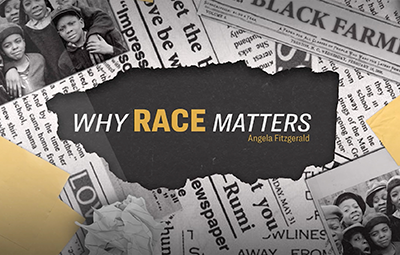
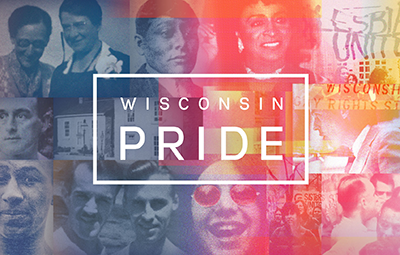



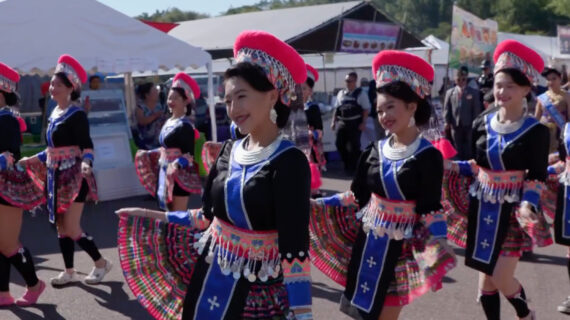
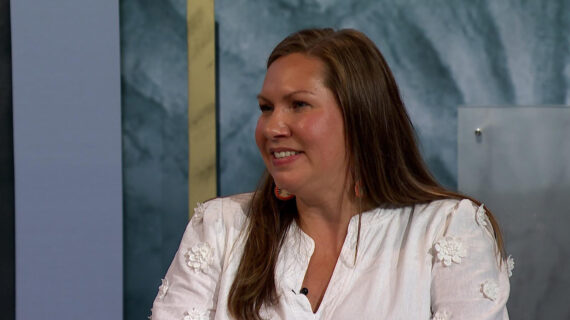
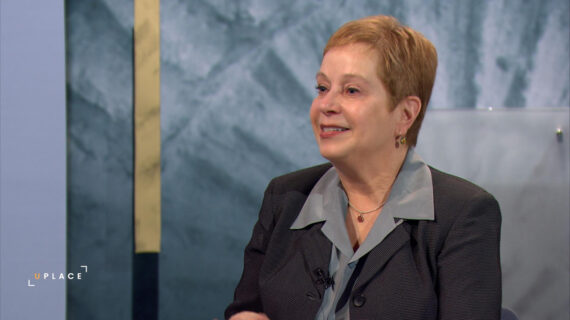

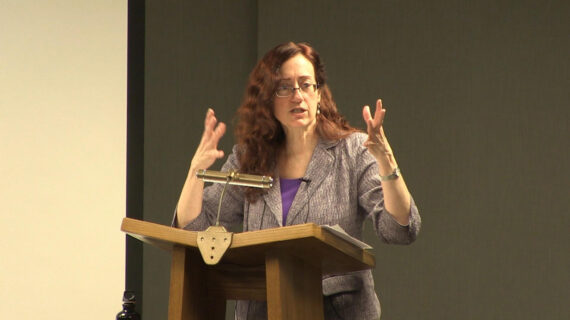
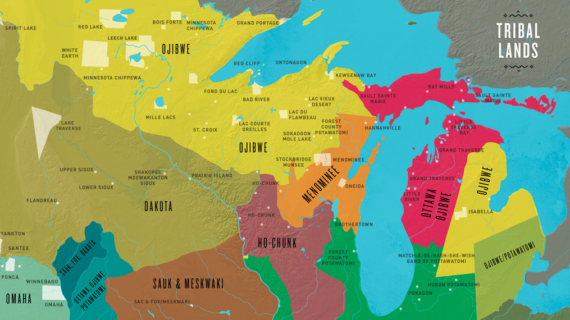
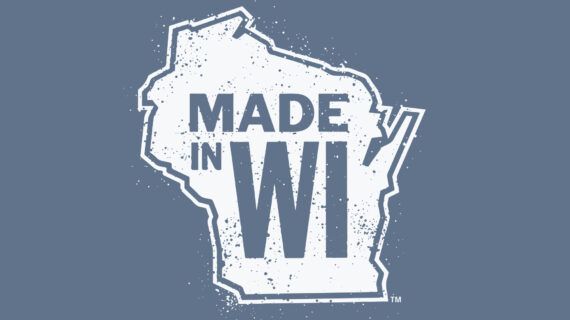
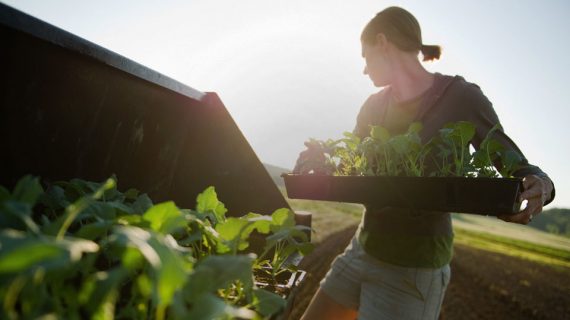
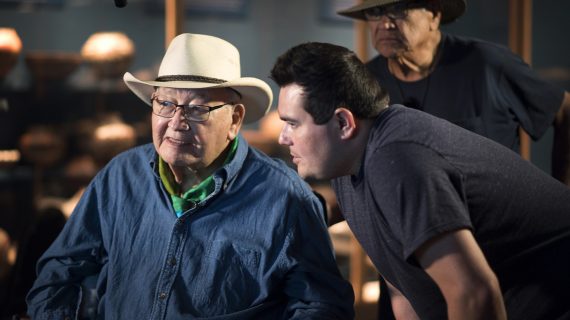

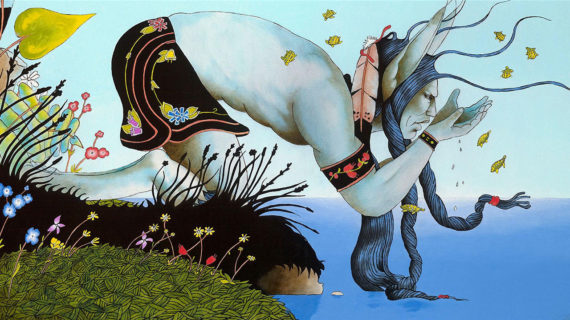

Follow Us